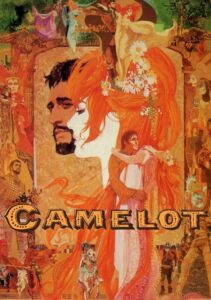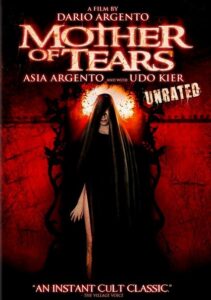The Warriors-1979
Director Walter Hill
Starring Michael Beck, Deborah Van Valkenburgh
Scott’s Review #1,383
Reviewed July 31, 2023
Grade: B+
The Warriors (1979) is an entertaining gang-themed action-thriller that is a perfect watch for a late Saturday night. Reportedly, it caused friction and outbreaks of fights in movie theaters when it was released but decades later doesn’t feel as dangerous as it might have upon release.
The film does terrific work with some art direction that melds live-action with colorful drawings of characters. This infuses an artistic experience and raises results way above dumb action flicks like Rambo (1982), Death Wish (1974), and countless others.
In perhaps a peculiar comparison, The Warriors reminds me a bit of Escape from New York by John Carpenter which came two years later. The isolated Manhattan streets and other areas with a post-apocalyptic feel merge the two films, in my mind anyway.
The film suffers a bit from a dated and obscure categorization and is not remembered as well as perhaps it should be. The acting isn’t terrific either but strangely this makes the experience a bit more raw and enjoyable.
After being wrongly accused of killing a charismatic gang leader named Cyrus, a Coney Island street gang known as the Warriors must hoof their way home which is miles from where the death occurred. They are pursued by both police and enemy gangs one of which framed them for Cyrus’s execution.
The ambiance and atmospheric qualities are the best aspects of the overall film. So many Big Apple treats can be found especially the infamous Central Park which takes center stage. The lavish and picturesque park wasn’t as safe and pristine in the late 1970s as in 2023 and the film uses this to its advantage.
Characters never know who or what might be lurking behind a bench or a tree. A particularly fun scene features a young Mercedes Ruehl being groped by a gang member only to be revealed to be a sexy policewoman who quickly puts the perp in handcuffs.
The other locales featured are plentiful and include Van Cortlandt Park, Union Square, 96th Street and Broadway, and Riverside Park. The beauty of this is that the action doesn’t include only Manhattan but other boroughs like the Bronx and Brooklyn showing the vastness of NYC.
The main romance is between Swan (Michael Beck) and Mercy played by Deborah Van Valkenburgh. The pair have a sliver of chemistry but I wasn’t watching the film for doey-eyed young people.
One scene was exceptionally done when the couple laid eyes on some well-dressed and upstanding teenagers on the subway who could easily be their doppelgangers.
Maybe them in another life? The forlorn look on the faces of Swan and Mercy reveals much as the couples all eye each other perhaps thinking the same thing.
Walter Hill directs the film and is well-versed in the action genre creating the popular film 48 Hours (1982). He paces and choreographs the action sequences so well that it’s as if the viewer is watching a dance routine occur.
The opening sequence gets the tone of the film out in the open as the storied Wonder Wheel on dusty Coney Island is on full display. Even the bright and windy shore feels gloomy and ominous as leather-clad gang members make it their turf.
The finale salutes the Warriors with a song, ‘In the City by Joe Walsh which I particularly enjoyed because it’s a great song.
Though unrealistic for the time, it’s nice to see gang members of different ethnicities team up together in diverse representation.
The film is a perfect watch for cinema fans thirsty for old New York City locales and greasy, dirty subway stations. Because the real Manhattan wasn’t too different from what The Warriors (1979) showcases.
























